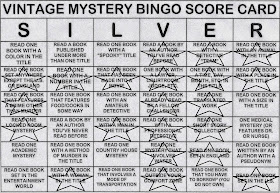 At the end of The Attenbury Emeralds, Peter Wimsey finds himself in a new role as the Duke of Denver. The Late Scholar opens three years later with Peter discovering that his latest title also carries the responsibility of Visitor for St. Severin's College, Oxford. As Visitor, he is charged with such duties as overseeing the installment of new Wardens and fellows to the college as well as acting as a sort of referee of last resort in times of irreconcilable conflict. It is in this last capacity that members of St. Severin's write to Peter and request his presence at Oxford.
At the end of The Attenbury Emeralds, Peter Wimsey finds himself in a new role as the Duke of Denver. The Late Scholar opens three years later with Peter discovering that his latest title also carries the responsibility of Visitor for St. Severin's College, Oxford. As Visitor, he is charged with such duties as overseeing the installment of new Wardens and fellows to the college as well as acting as a sort of referee of last resort in times of irreconcilable conflict. It is in this last capacity that members of St. Severin's write to Peter and request his presence at Oxford.It seems that the college is in rather desperate straits financially and one solution would be to sell a valuable manuscript to buy some land for development. The fellows are divided evenly on the issue and the Warden has previously cast the deciding vote--but the Warden has disappeared. Peter, Harriet, and Bunter arrive at Oxford to find that not only has the Warden vanished, but there have also been attacks and "accidents"--some of them fatal--on various fellows of the college. Peter finds himself acting not only as Visitor, but as detective as well as he attempts to discover who is behind the attacks and why.
Four books into the revived Lord Peter Wimsey/Harriet Vane stories and Jill Paton Walsh is finally getting things more right than not. Given her own series featuring Imogen Quy, a nurse at St. Agatha's College, Cambridge, it may well be that she is far more comfortable with the academic setting and this story which takes place at Oxford has made her feel at home. Or perhaps she is just acclimating to her task of writing in Sayers's shadow--regardless, this story was much more enjoyable for this Sayers fan.
The banter between the Peter and Harriet sounds (for the most part) affectionate and smart and literary as Sayers intended. The relationship is easy and comfortable as it should be between two people who have loved each other this long. The quotations fit more comfortably into the conversations instead of sounding as if Paton Walsh had just opened a book of literary quotes, picked one at random that might fit the topic at hand, and dropped it in the mouth of Peter or Harriet. In fact, congratulations on the characters all round--from the Dowager Duchess to the Wimsey sons to the dons of Oxford. The mistakes in well-known (to LPW fans) characters are few and far between--the most glaring is having Miss de Vine commit such a blunder in reference to Harriet's past experience as a murder suspect. The Helen de Vine we all know and love from Gaudy Night would never drop such a social brick. Another problem that struck me quite forcibly was having Peter pull a revolver out of his pocket to shoot the lock off a stubborn locked door--Peter Wimsey is no hard boiled private eye; he doesn't go round with firearms in his pocket, shooting his way into places.
So...high marks--with a few reservations--for characterization. The plot, however, is a bit disappointing. While the basic problem of motive is new to the Wimseys, the methods of murder and attempted murder are not. Each incident is stolen from Harriet's mysteries (read Sayers here, since most of the murders referenced have been based on Peter's cases). Paton Walsh has no need to devise murder methods of her own...she just grabs them from Harriet's books. The motive is also a bit murky--I think I understand it (although I don't entirely buy it), but with Sayers I would have been sure. All-in-all, a much better outing and if Paton Walsh gives us another Peter and Harriet story, I have hopes that it may be even better still. ★★★

















